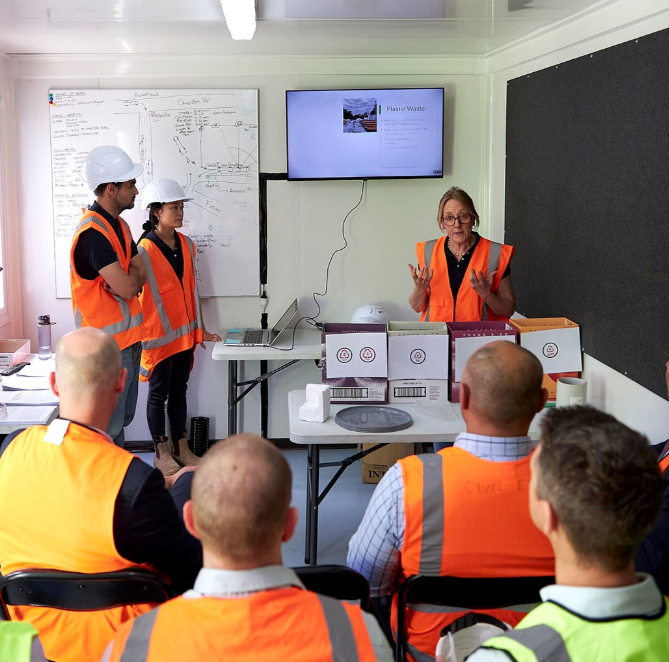How to use WasteHub using FIVE steps to enable sustainable waste management, where to start, and how to set up on site. Start by categorizing your waste into distinct streams—plastics, timber, metal, and more. For this guide, we'll focus on plastics, though the same principles apply to other materials. For a video on site set-up click here.
How to set-up your site
STEP 1
Identify the types of plastics
To identifying plastic type check out the Waste Catalogue. This comprehensive resource lists plastic waste commonly found on New Zealand construction sites, what it's made of and whether it can be recycled. Some plastics have recycling numbers clearly visible, but for others, use the Catalogue to match the product with its plastic type.
STEP 2
Will the supplier take it back?
If you have a significant volume of plastic waste from one supplier, why not give them a call to ask about a take-back scheme? See a list of suppliers who take back their construction products on tour NZ Waste Map. Some companies, like ShrinkWrap Supplies, will collect their used product free of charge (provided it’s in the right condition) and recycle it into useful products, such as GoodWrap timber wrap. A supplier take-back scheme can save you time and hassle, but it does require coordination and careful checking that the product is in the right condition. Be proactive— talk to your suppliers early to set up a return system. If you have a significant amount of one type of plastic and there is no supplier, take-back scheme, find a local recycler.
STEP 3
Is There a Local Recycler?
Check our, NZ Waste Map - simply type in your location to find recyclers in your area. Remember to check transport options, how and where the plastic should be delivered, and condition requirements.
STEP 4
Site-set up + order bins and signs
Click here for free downloadable signs and links to bag suppliers. Mitre 10 also has free signage available on their website. The aim is to optimise your construction site with effective waste separation - proper waste management lowers landfill fees and environmental impact. If possible, have the domestic council bins available for food and drink waste.
STEP 5
Get your team onboard!
Educate your team on why we are sorting, how to sort the waste and ensure it is in the right condition. If possible, assign someone to oversee the site’s waste separation to ensure the area is tidy and sorting is done correctly. See our site set-up gallery for examples.





